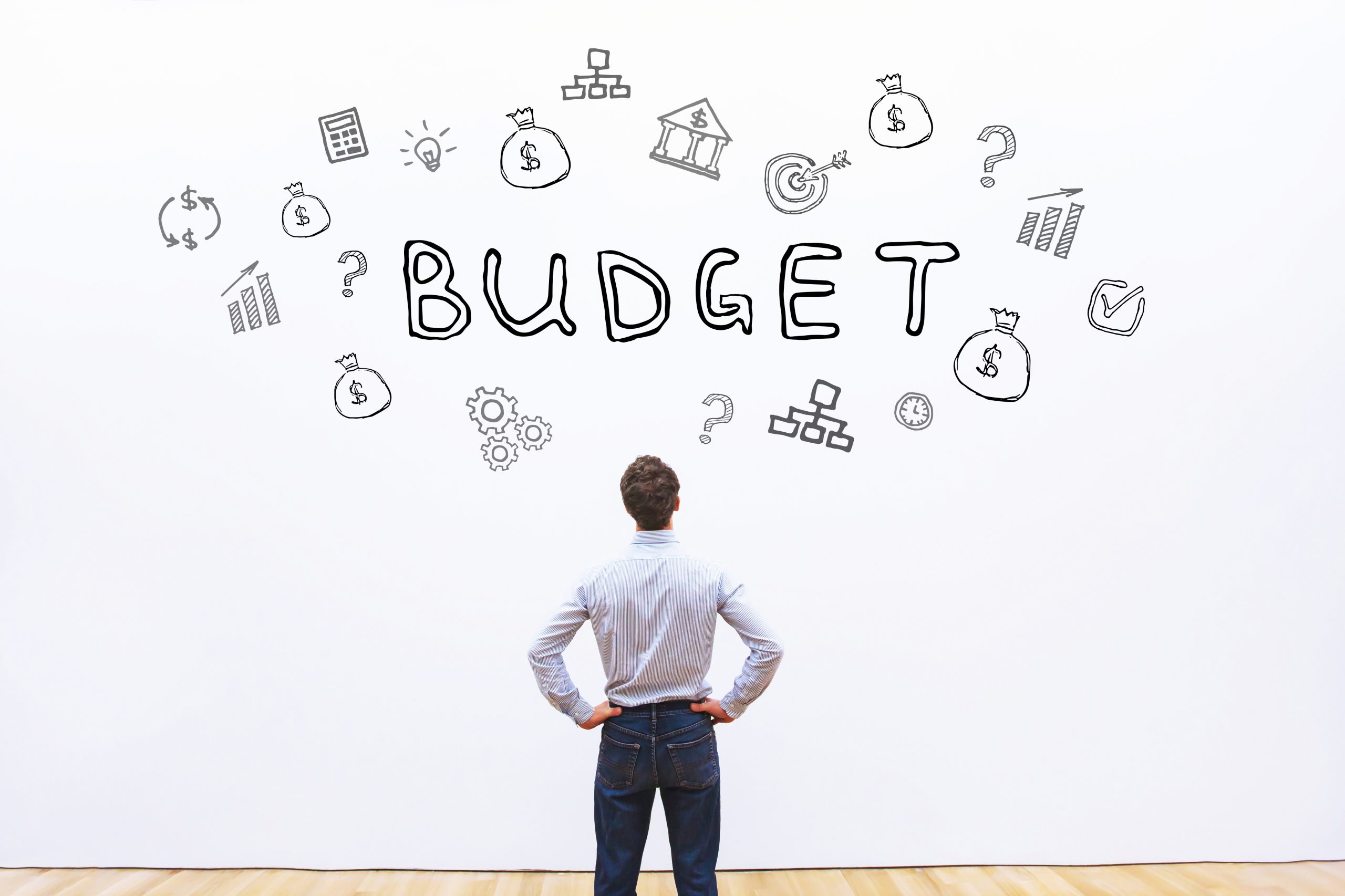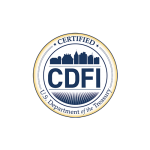A Simple Guide to Budgeting

One of the most powerful steps you can take to gain control of your finances is to set up a budget and stick with it. Money is the leading driver of stress for many Americans. Check out our tips on Budgeting in 6 Easy Steps! For most people, money issues create more stress than work or personal relationships. Yet according to a recent survey, less than 65% of Americans don’t know how much money they spent last month or where their money went!
In fact, over 32% of people who don’t have a budget say that they don’t make enough money to need one—or that they’re too poor to budget. This highlights one of the main stumbling blocks for many: not believing the budgeting process works.
However, studies show that making a budget, even a simple budget, and sticking to it, will improve your financial situation. It can go a long way in alleviating financial stress. The majority of people who maintain a budget report feeling more in control, more confident, and more secure.
Before you budget, you need to decide what you want to want to achieve. If you are at a loss on how to begin budgeting here are some things to consider.
First Determine Your Goals
Budgeting is about setting financial goals and finding ways how to meet them. Setting realistic goals includes things like getting out of debt, saving for a home, buying a new car, or putting kids through college. Having realistic goals ensures that any amount of money you come into contact with has a purpose.
Remember for your monthly budget to be successful you need to be working towards something. Set your short-term and long-term financial goals. Your short-term goals like repaying your credit card bill should not take more than a year to accomplish. Long-term goals like saving for your retirement or your children’s education will take years. Your goals can change, but you need to prioritize your goals before starting your budget. Budgeting can be as simple as 6 easy steps.
Setting Up Your Budget
Once you have decided on your goals, you can set up your budget. You’ll want to calculate your expected monthly income, as well as your typical monthly expenses, and break it all down into categories. If your income is higher than your expenses, you are off to a good start. To be able to create a successful budget you will need to get a firm grasp on your spending. This will help you understand how much you can afford to spend on your priorities and financial goals. Here are six simple steps to follow to be able to create an effective budget.
1. Gather All Your Financial Statements
When creating a budget, the first step is to gather all your financial papers, so you can account for all your spending and income. This should include; bank statements, credit card bills, paychecks, receipts from at least the last 3 months, electronic payments, and benefit payments.
2. Calculate Your Net Income
Your next step is to determine your net income. Your net income is your take-home or after-tax income. This is the only money that you will use for determining your monthly budget.
If you have a regular paycheck where taxes are deducted directly then your net salary is what you use. If you are self-employed then the money you get after-tax deduction is what you will take into account.
While calculating your income you will also need to add up any other source of income like side jobs, social security, and any other external source. If you have a varying income maybe from freelancing, tips, or commission job, use the lowest income as your baseline on your budget.
3. List All Your Monthly Expenses
Next list all of your expenses. Use bank statements, credit card bills, and receipts from the last three months to track how much you spend and on what. Begin by listing your fixed expenses first. Fixed expenses include things like utility bills, mortgage payments, car payments, insurance, debt payment, savings, and rent.
Then you need to list all your variable expenses. These include groceries, eating out, holidays, gifts, entertainment, and gasoline. This is an area where you can find an opportunity to cut back.
After listing your expenses, start estimating the associated dollar figure on your fixed expenses. Repeat this process for your variable expenses. If you are not sure check your financials for the last three months to make a rough estimate.
You may want to consider using budgeting software to help you track expenses. Some programs will load the last three months of transactions, and you can base your budget off of that. Others send you a warning when you’re about to go over budget.
4. Cut Spending
If your expenses are more than your income then you will need to cut down on some of your expenses. Remember if you want to meet your financial goals in the long run you will have to make sacrifices.
You should continually evaluate areas where you can cut your spending. It is easy to assume that your bills are set in stone and that you cannot do anything to lower them. However, if you shop around every year or two, you may find deals on expenses like internet or car insurance. You may find that you save quite a bit of money with just a few hours of research.
You are planning a major remodeling of your home. Unlike a home equity line of credit (HELOC), personal loans don’t require using your home as collateral. This allows you to finance remodeling without putting your home at risk.
5. Monitor And Adjust Your Habits
When you list all expenses on paper you will be able to see where your money is going. Sometimes we cannot make sense of our spending until we see it altogether in one place. It might shock you how much you spend on unnecessary things. If you find your expenses exceed your income then start by cutting down on unnecessary spending.
If your monthly budget still doesn’t add up, then you might need to adjust your fixed expenses. This might prove hard to do, but with discipline, it can be done. It’s very important to review your budget and evaluate your spending.
6. Track Your Budget
Once you have created your budget, you are ready for the hard part, keeping to it. It’s here where many people who attempt budgeting will stop. It can be time-consuming to track your expenses, record your transactions each day, and subtract them from the correct budget category. Even more challenging: making sure your expenses do not exceed your income. Take time to review your budget each night for the first month to help you track your categories.
After one month, you will need to evaluate your budget. This is essential for getting it to work. Ideally, you should plan to evaluate your budget monthly for at least the first six months. This will help you learn to identify your budget weaknesses. Then, you can make adjustments to areas where you may have estimated the wrong amount.
In the first month, you should not make major cuts, but each month after that, try cutting back to save more. As the months go by, you may be able to cut your spending back even more than you originally thought, and increase the amount you put toward your goals. A good budget should be detailed enough to show what you’re actually spending your money on but also not too detailed making it hard for you to keep up.
Summary
Having a simple budget is key to sticking to a budget. Your budget is an important financial tool that will help you plan how much you will save or be spending each month. Remember having a budget is having your money working for you not the other way round. So do not view your budget as restrictive, as rather means to the end for your financial success.
Your budget is meant to help you achieve your future financial goals. It’s to help you move your financial habits in the right direction, and better navigate where you need to cut spending. It will help you create a healthy mindset about finances and track your progress as you pursue both your short and long-term goals.






